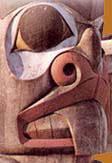Why Cedar?
"Tub Talk - with Dan Jung ? Owner www.cedartubs.com / Hot tub enthusiast"
Why Cedar?
Why Cedar? I get asked this question all the time!
Why should I buy a cedar hot tub versus redwood, pine, oak, .... Well, let me give you a little information that I have found very interesting in regard to why cedar is the ideal wood of choice in manufacturing our cedar hot tubs.

Why Real Cedar Has Been America's Outdoor Choice for Centuries?? The "Tree of Life" is what the first residents of the Pacific Northwest called the stately Western Red Cedar. Its legendary durability made cedar natures gift for building ocean-going canoes, post-and-beam houses, ceremonial dance masks and ancestral totem poles, many of which have withstood centuries of weathering.
Cedar's durability is legendary. Its natural resistance to moisture decay and insect damage makes Western Red Cedar the ideal choice for structures that are exposed to sun, rain, heat, and cold all year round.
Western Red Cedar is the stability leader. It has long straight grains that resist twisting, warping, cupping, setting, and shrinking. This has been why Western Red Cedar has long been the choice outdoor wood for custom home builders.
Let’s not forget that cedar is a renewable resource. Western Red Cedar is harvested from sustainable forest management. Cedar Substitutes such as plastic, concrete, vinyl... which are material extracted from the earth - once removed they can never be replaced. Once theses cedar substitutes complete their useful life, they end up in a land fill site. Cedar is 100% biodegradable, not to mention the energy that went into producing the plastic substitutes.
Here is some more information I think you will find interesting. It is taken from the Western Red Cedar Lumber Association http://www.cedar-outdoor.org/
Dimensional Stability
Like all woods, Western Red Cedar is hygroscopic and will absorb or discharge moisture to attain equilibrium with the surrounding atmosphere. However, it has a very low shrinkage factor and is superior to all other coniferous woods in its resistance to warping, twisting and checking. The size differential between dry and unseasoned Western Red Cedar is given in Table 2. Shrinkage in both the radial and tangential directions is also given in Table 2.
Thermal Conductivity
Wood is an excellent thermal insulator. This is an important characteristic since good thermal insulators help keep buildings cool in the summer and reduce heating costs in the winter.
The conduction of heat in wood is directly related to its density. Woods with low density have the highest thermal insulating value because such woods contain a high proportion of cell cavities. In dry wood, these cavities are filled with air which is one of the best known thermal insulators.
With its low density and high proportion of air spaces, Western Red Cedar is the best thermal insulator among the commonly available softwood species and is far superior to brick, concrete and steel. It has a coefficient of thermal conductivity (k value) at 12% mc of 0.74 BTU in. per square ft. H degrees F. The R value (the reciprocal of k) for Western Red Cedar is 1.35" of thickness.
Durability
Historically, native peoples of the Pacific coast prized cedar for its long-lasting qualities and used wood and bark from cedar trees for most of their building needs. Evidence of cedar's durability are the many cedar artifacts still in good condition today.
Properly finished and maintained, cedar will deliver decades of trouble-free service. If exposed for prolonged periods to conditions where decay could be a factor, such as where the wood is in contact with the ground, cedar should be treated with suitable wood preservatives.
Finishing
Although cedar is a naturally durable species, leaving it untreated is not recommended because a finish or protective coating will greatly increase its service life. Cedar is free of pitch and with its high degree of dimensional stability, it is the best of the softwoods for accepting paints, stains, oils and other coatings. For a detailed discussion, see Finishing Western Red Cedar published by the Western Red Cedar Lumber Association
Products, Grades and Sizes
There are few more versatile building materials than Western Red Cedar which is ideal both for indoor and outdoor uses. Western Red Cedar lumber is available in visual stress grades for construction and finishing uses in a range of lengths, widths and thicknesses. It is available in clear or knotty grades with smooth surfaced, combed or rough sawn finishes; kiln dried or unseasoned (green); flat grain and vertical grain.
Western Red Cedar (Thuja plicata) is one of North America's great renewable resources. Slow growing and naturally durable, Western Red Cedar has one of the longest life spans of any North American softwood. It produces long lengths of timber with true, straight grain. It is free from pitch and its heartwood has natural decay resistance. Its low density gives it an insulation value superior to most other species. Light weight, easy to work, easy to finish, possessing outstanding dimensional stability, Western Red Cedar is a preferred wood for nearly all purposes where attractive appearance or resistance to weather is important.
Features of Western Red Cedar
| Acoustic properties: | Cedar tends to dampen sound transmission |
| Density(oven-dry): | 22 lb/ft3 |
| Specific Gravity (oven dry): | 0.35 |
| Durability: | Durable species |
| Fasteners: | Corrosion resistant only (aluminum, hot-dipped galvanized, brass, etc.) |
| Finishing: | Paints, stains, varnishes, oils and waxes all work well |
| Flame spread rating: | 69 (class II) |
| Smoke developed classification: | 98 |
| k value(12% mc) | 0.74 BTU inch/square ft.h degrees F |
| R value: | 1.35 in. of thickness |
| Stability: | Cedar is the most stable softwood species |
| Workability: | Easy to cut, saw, nail and glue |
Table 1. Comparative Softwood Densities (pcf)
|
Species
|
Oven-Dry Density
|
|
Western Red Cedar
|
22
|
|
Douglas Fir
|
31
|
|
Ponderosa Pine
|
27
|
|
Southern Pine
|
34
|
Table 2. Shrinkage of Western Red Cedar
| Direction of Shrinkage |
Shrinkage in Percentage
|
|||||
| From green (25% or greater moisture content) to: | From kiln dried (15% average moisture content) to: | |||||
|
15%
|
12%
|
6%
|
15%
|
12%
|
6%
|
|
| Radial |
0.96
|
1.2
|
1.8
|
0
|
0.3
|
1.0
|
| Tangential |
2.0
|
2.6
|
3.8
|
0
|
0.7
|
2.1
|
Notes:
- Radial shrinkage applies to the width of vertical grain lumber: tangential to the width of flat grain lumber.
- Shrinkage does not begin until the fiber saturation point is reached.
- 15% is the average equilibrium moisture content of wood during the summer in the Pacific Northwest.
- 12% is the summer average equilibrium moisture content in dry areas of the Pacific Northwest.
- 6% is the average equilibrium moisture content for interiors of heated buildings.
If you have any questions regarding the maintenance of your tub or have any experiences you would like to share, please call or email me any time.
Happy Tubbing!
Dan Jung
President








